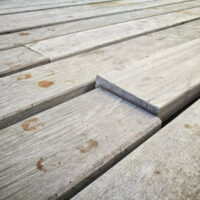10 Types Of Uneven Flooring Dangers

In a city like Miami, where public spaces, businesses, and tourist attractions abound, maintaining safe walking surfaces is essential. When flooring is uneven or poorly maintained, the risk of accidents increases significantly.
If you’ve been injured due to uneven flooring, connect with a Miami personal injury lawyer. Attorneys can help you pursue compensation for medical bills, lost wages, and suffering.
Common Types of Uneven Flooring
There are a range of flooring issues that can cause falls, including the following examples.
- Cracked or broken tiles. Tiles can crack due to wear and tear or improper installation. Cracked tiles create an uneven surface that can easily cause someone to trip, leading to sprained ankles, broken bones, or even head injuries.
- Loose carpets. When carpets are not securely fastened or have become worn over time they can bunch up, creating ridges or loose edges that are easy to trip over. This is especially dangerous in high-traffic areas like hotel lobbies and office buildings.
- Warped wooden floors. Moisture, temperature changes, and subpar installation can cause warping of wood. Warped boards can create raised edges or dips that are difficult to see, making them a hidden tripping hazard.
- Potholes in concrete. Outdoor areas like parking lots and sidewalks often suffer from potholes or sunken concrete. These depressions can be particularly hazardous when they’re not clearly marked, causing unexpected falls.
- Uneven sidewalks. Tree roots can cause sections of sidewalks to become uneven. This is a frequent problem in older neighborhoods and can lead to severe injuries, especially for the elderly or those with mobility issues.
- Worn stair edges. Staircases with worn or rounded edges are a significant fall risk. If the tread of a step is uneven or not clearly marked, it can lead to missteps and falls.
- Slippery Floors from polishing or waxing. Over-polished or waxed floors, while not inherently uneven, can create a slick surface that leads to slips. This is common in retail stores and restaurants, where the desire for a clean, shiny floor can override safety concerns.
- Loose floorboards. In older buildings, floorboards may come loose over time, creating gaps or raised sections that can easily trip an unsuspecting pedestrian.
- Thresholds between different flooring types. Transition areas between different types of flooring, such as from carpet to tile, can create uneven levels. If these transitions are not smoothed out or marked, they can catch people off guard.
- Mats or rugs that shift. Common in entryways or near exits, mats and rugs can become dangerous if they are not properly secured. A shifting mat can easily lead to a slip or trip, especially when people are carrying items or are in a hurry.
Each of these examples represents a potential danger that property owners must address to keep their premises safe. After an injury, talk to Miami personal injury lawyer. Property owners have a legal obligation to ensure their floors are free from hazards.
Legal Recourse for Slip and Fall Victims
How did dangerous flooring contribute to your injuries? Talk to the experienced attorneys at Spencer Morgan Law about the possibility of securing compensation. Call 305-423-3800 for a confidential consultation.
